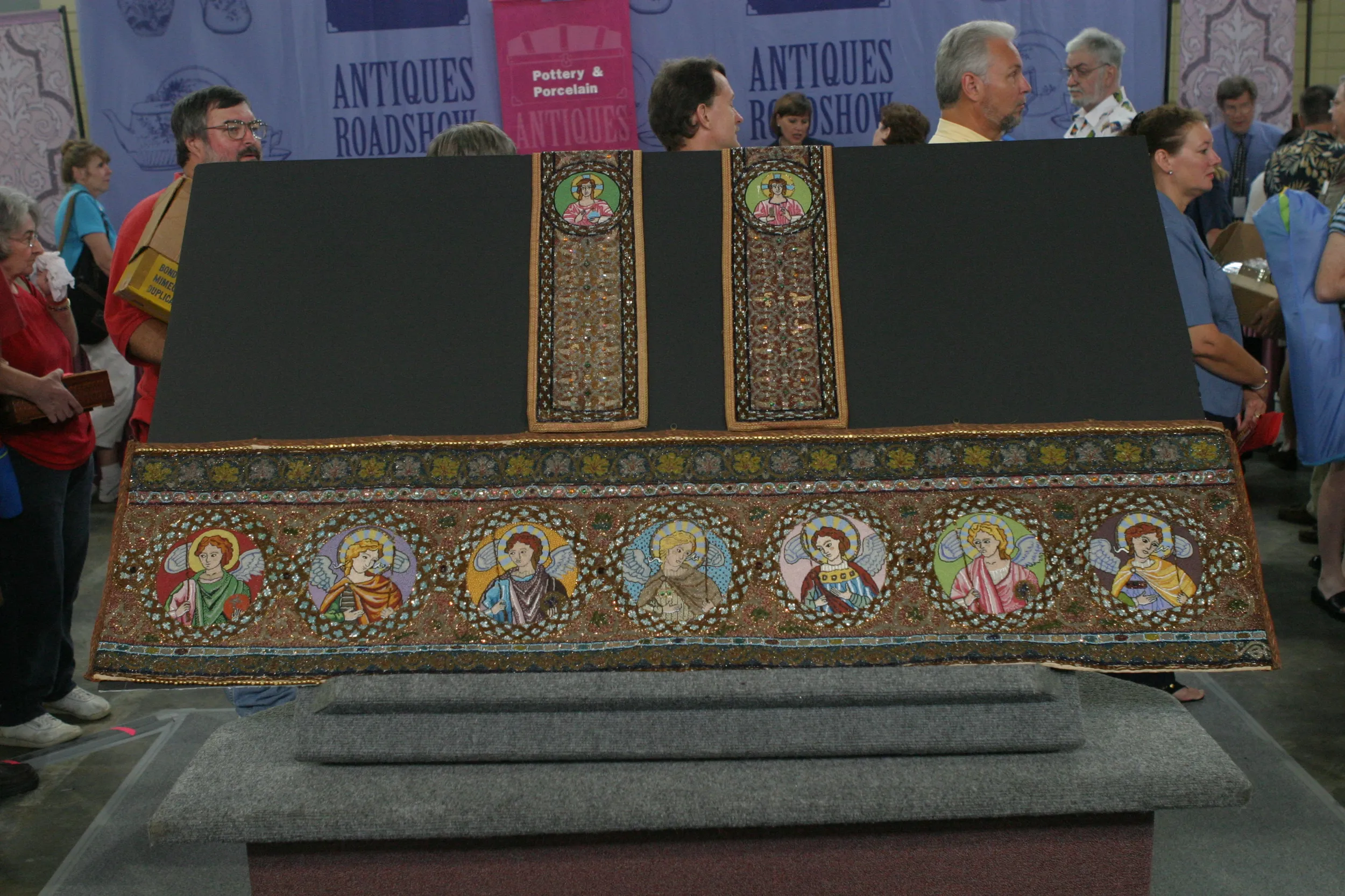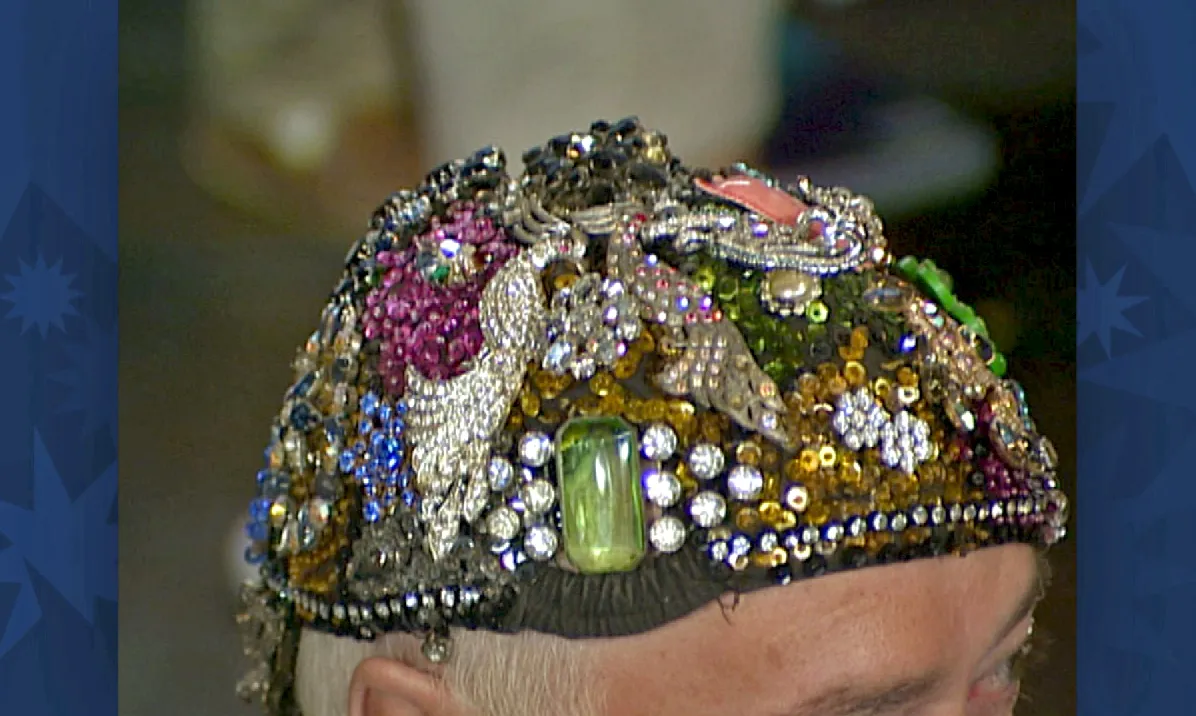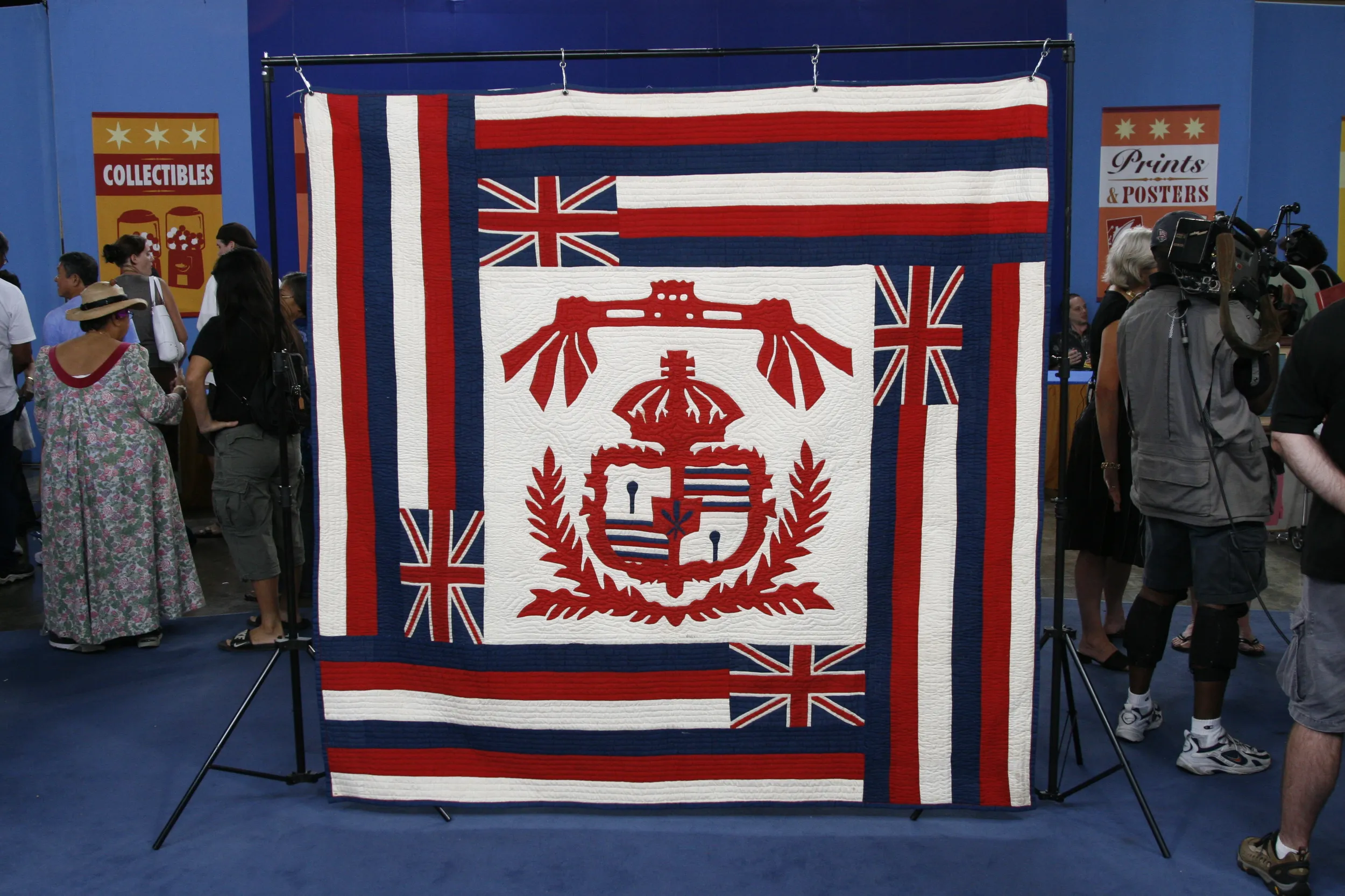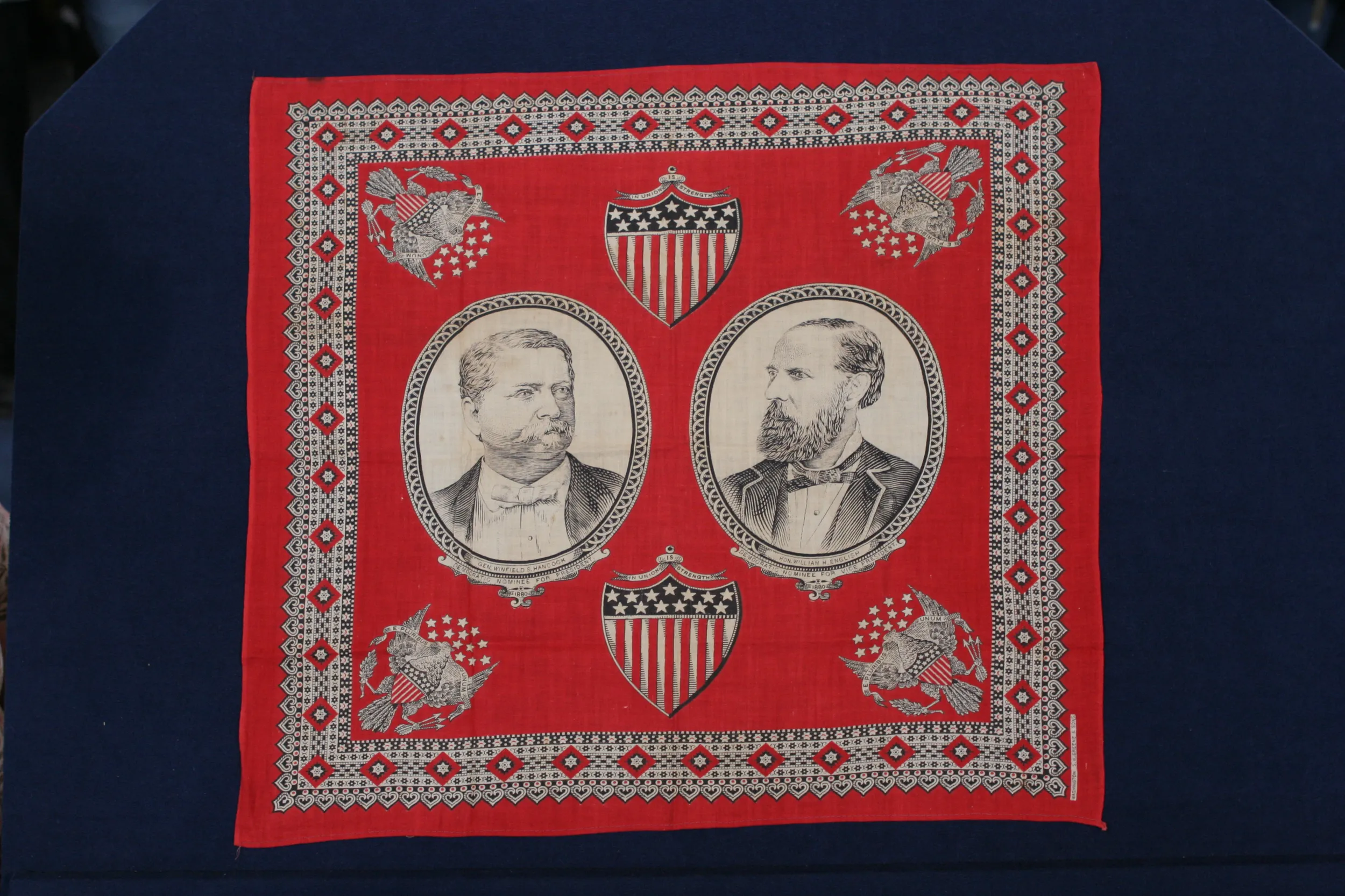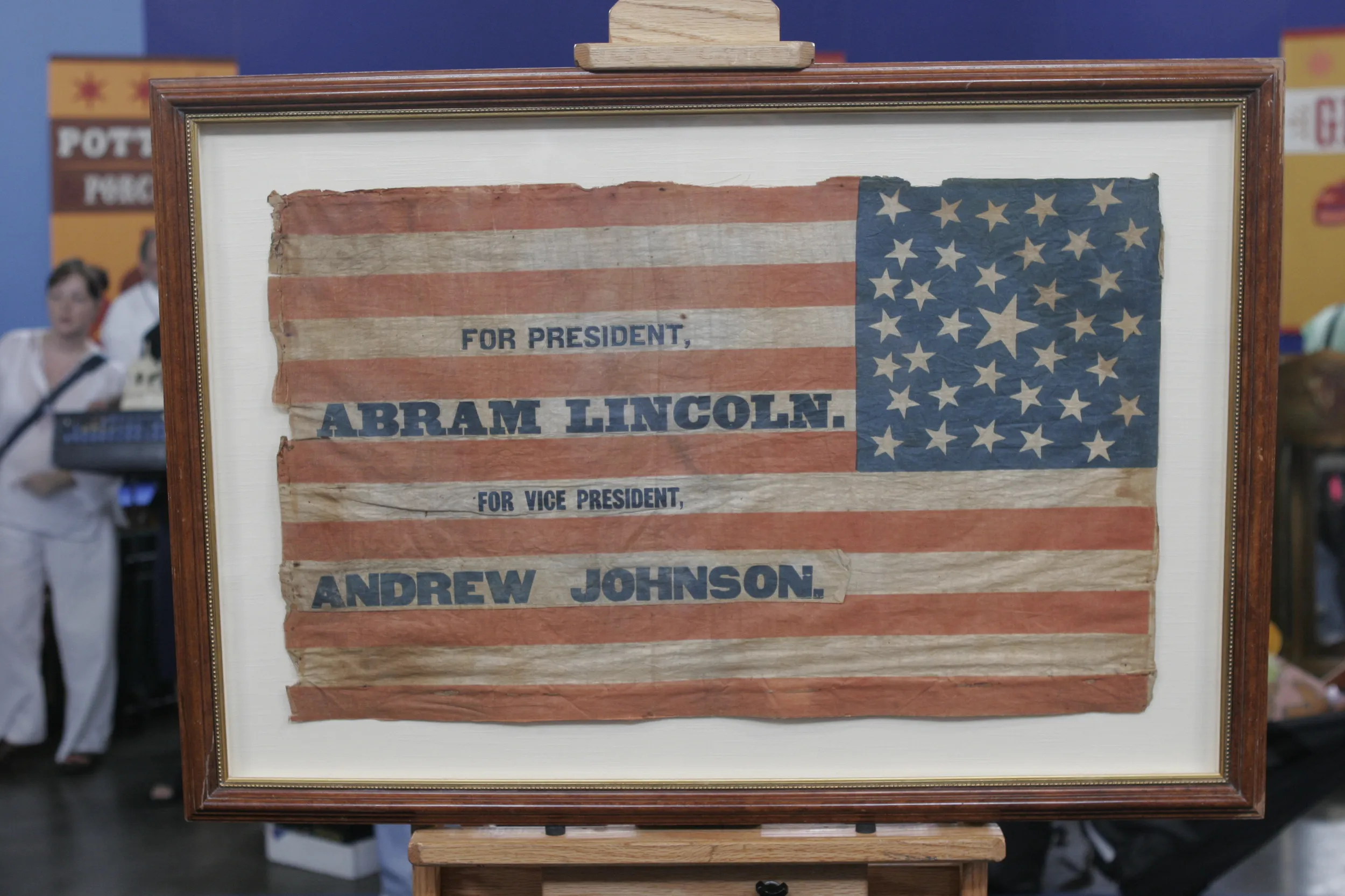GUEST: My grandmother gave it to me about 40 years ago.
APPRAISER: Do you have any idea where she got it? It was just in the family?
GUEST: I don't know. It was in the family. It may have been from her parents.
APPRAISER: What you have here is a campaign textile from 1880. The campaign of Hancock and English, president and vice-president, who were the loser in that election to James Garfield and Chester Arthur. Have you ever had it evaluated?
GUEST: About 30 years ago, somebody offered me five dollars for it.
APPRAISER: 30 years ago, that was not an unfair offer. Campaign collectibles took off about 30, 40 years ago as a category. And the collectors focus almost completely on the political buttons.
GUEST: Uh-huh.
APPRAISER: Now, political buttons were introduced in the campaigns in the 1890s. And McKinley was the first campaign they were used in. And all the miscellaneous material that was used beforehand to promote candidates-- and there was a vast amount of it-- was sort of lying fallow. They used to use clothing buttons with the name of the person on it. They would have daguerreotypes hanging down with the picture of the candidate. There were some great Lincoln daguerreotypes. And one of the most popular advertising pieces, promotional pieces, was textile work, and this is a prime example of that genre. First of all, the condition on this thing-- it's just stunning. I mean, it's in perfect condition. It's been kept where?
GUEST: In a plastic bag. My grandmother gave it to me in a plastic bag. It's still there.
APPRAISER: The next interesting thing about it is, there are a core of collectors for losers, because in many cases the loser's material was discarded, because people thought it was valueless. So there is much less loser material around. So if we get to a value of that $5 piece from 30 years ago, you're now looking at $1,800 to $2,000.
GUEST: Wow, for this scarf?
APPRAISER: For this bandanna.
GUEST: Okay, thank you. That's a surprise.

